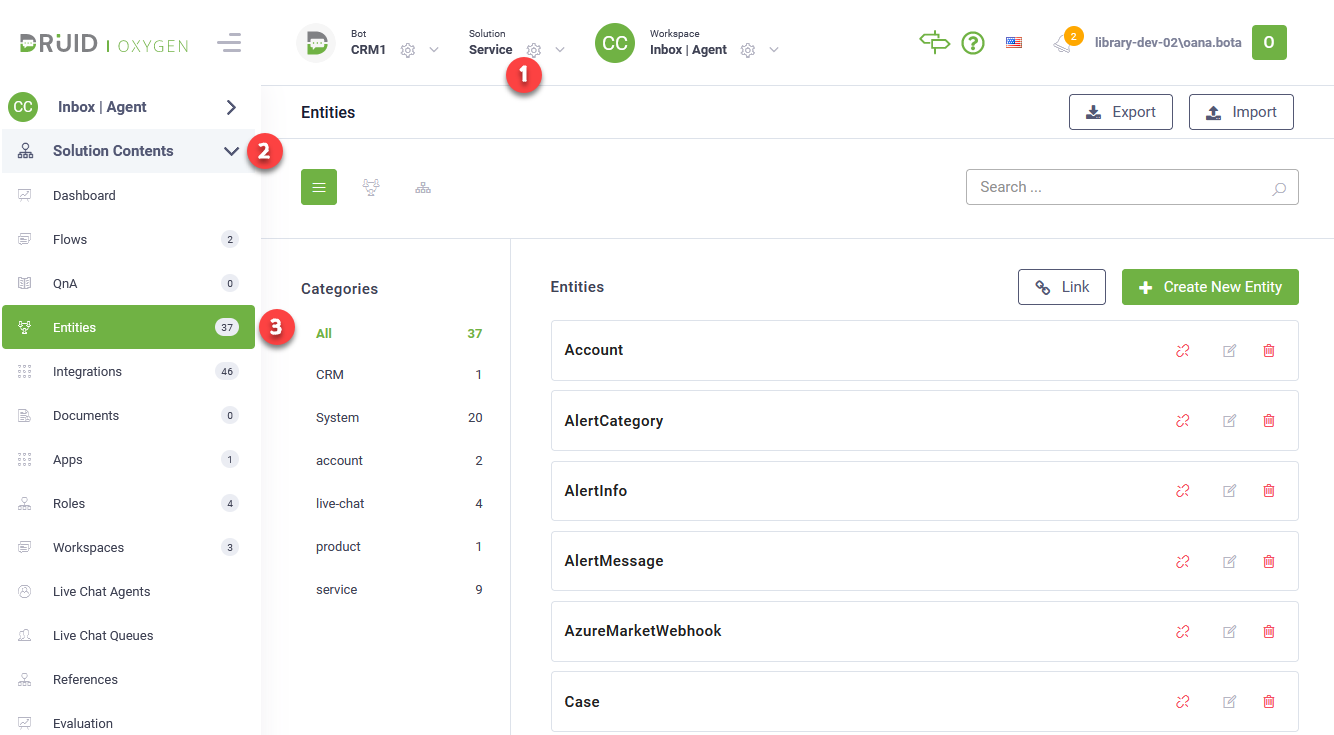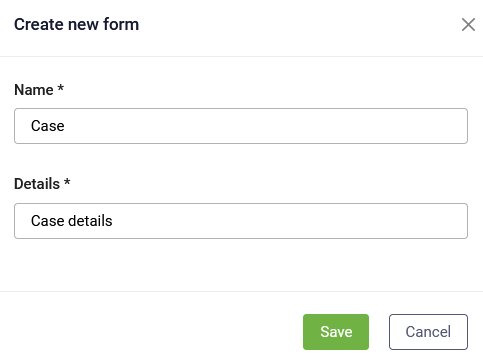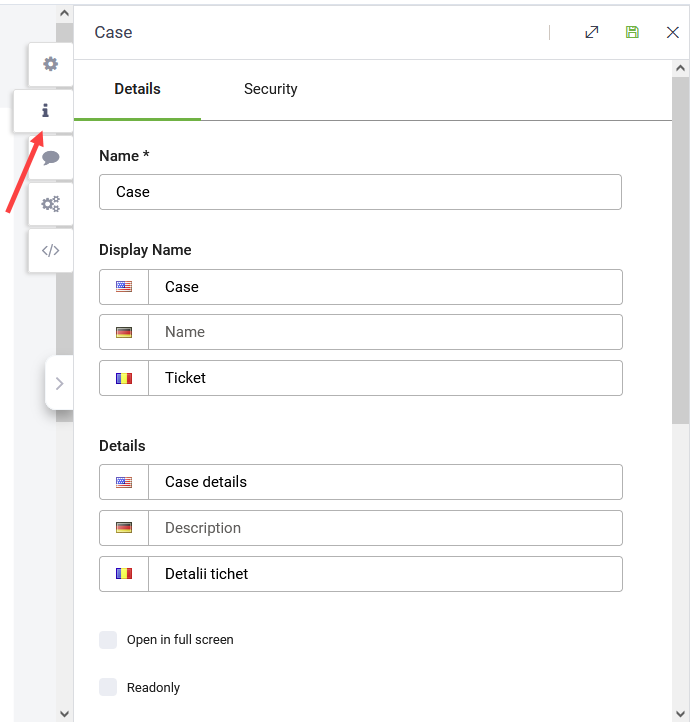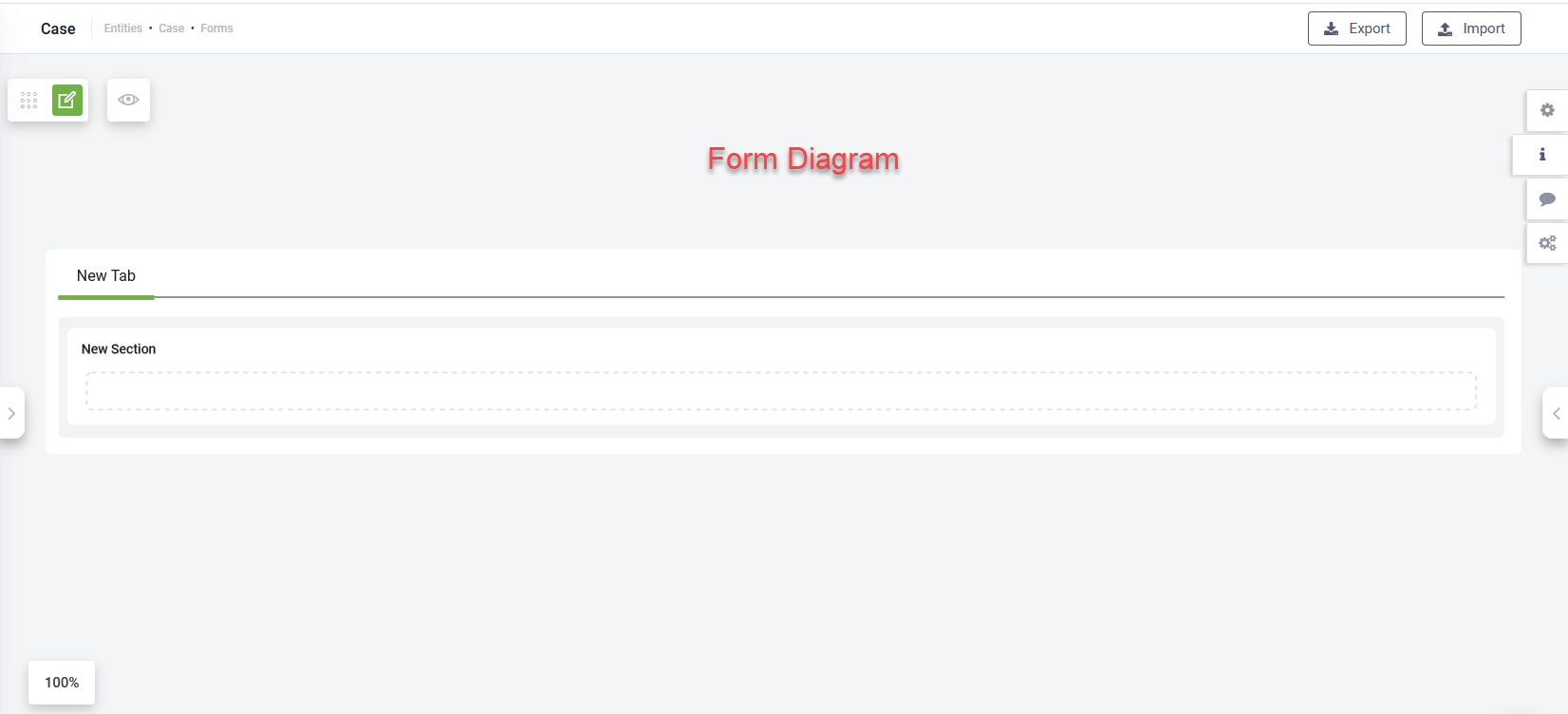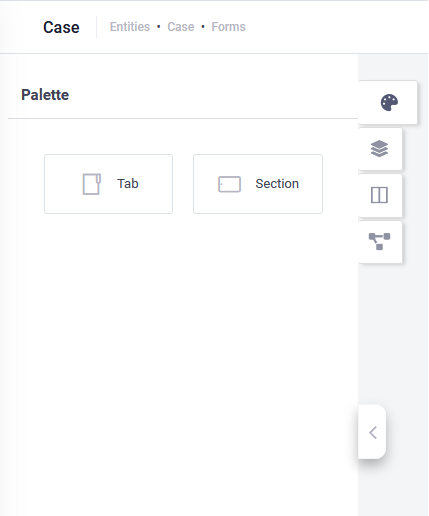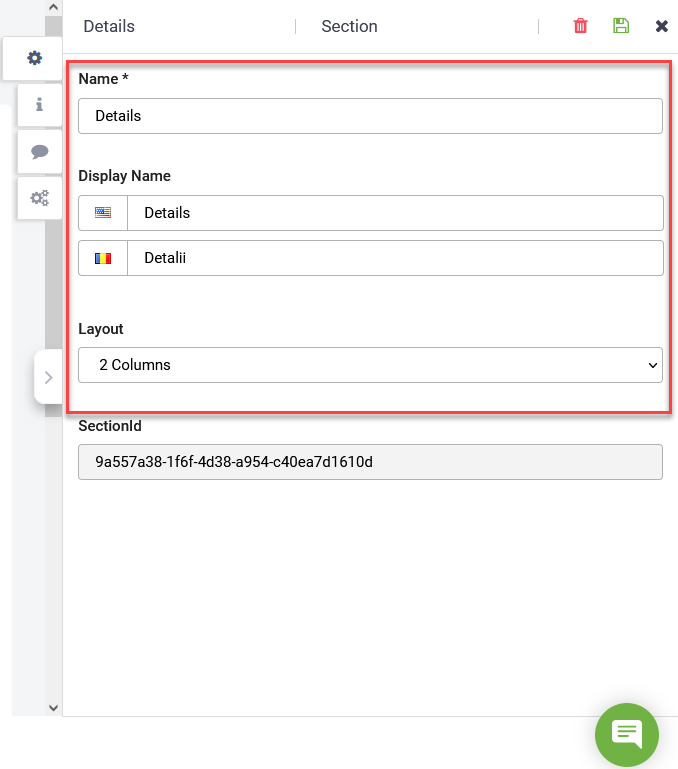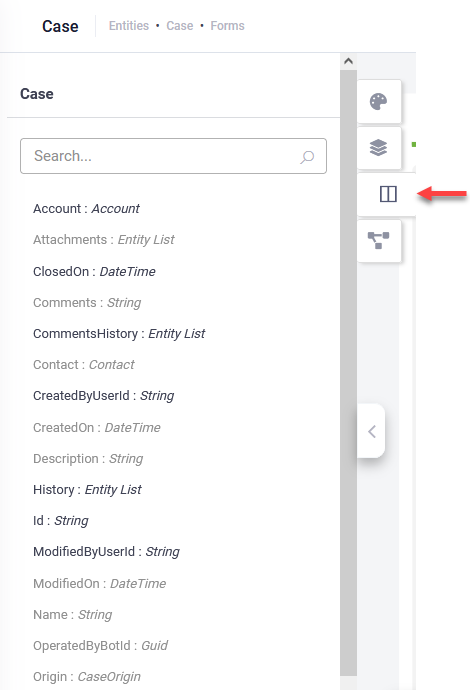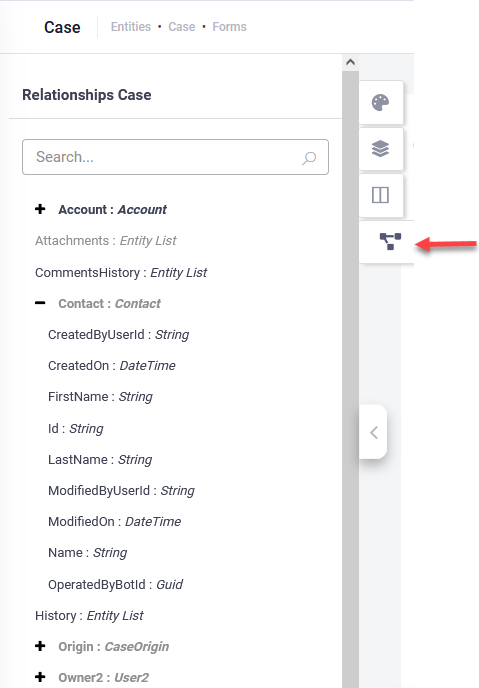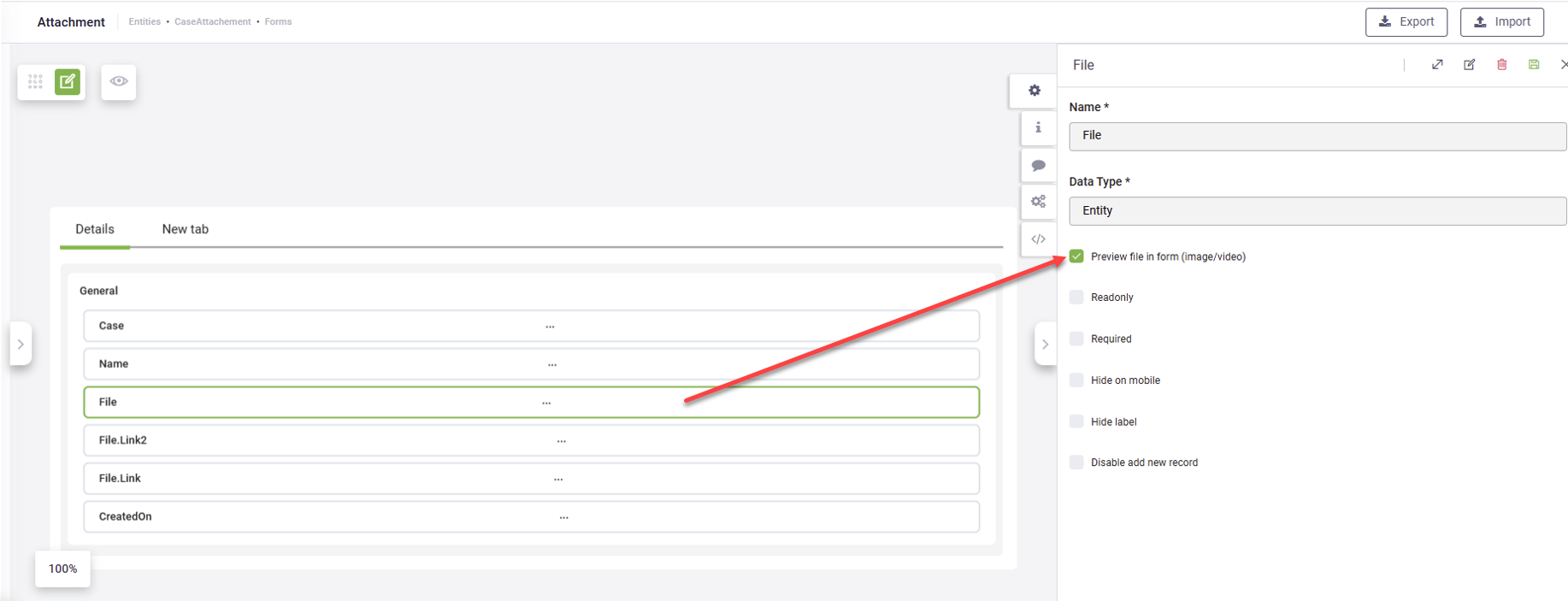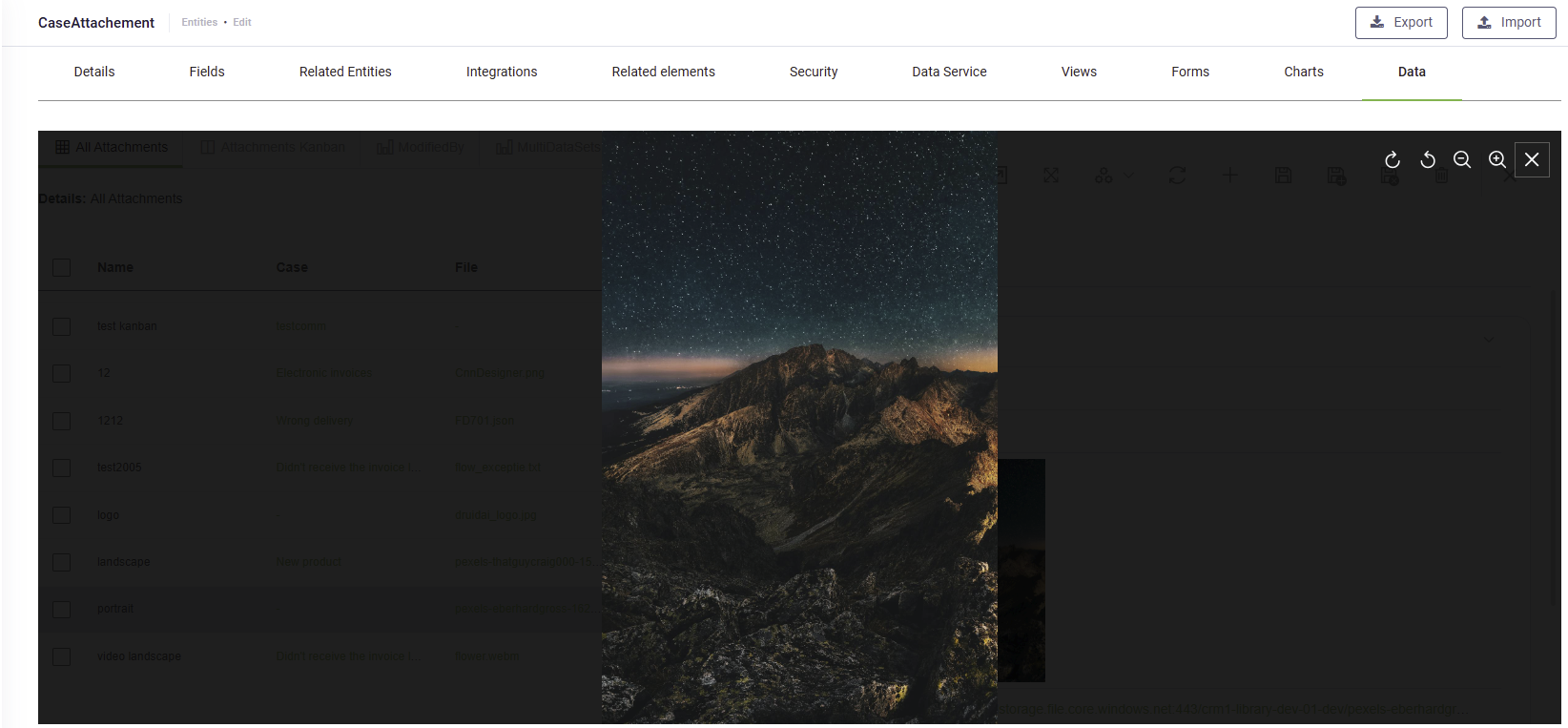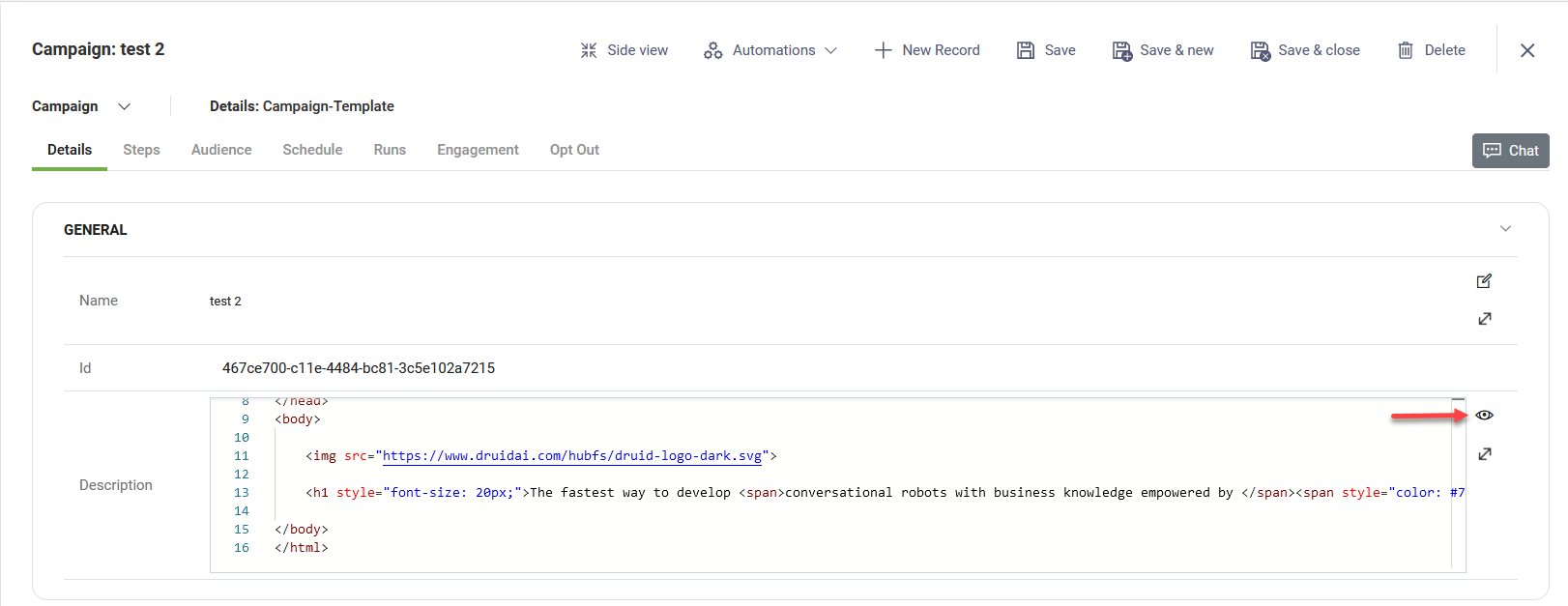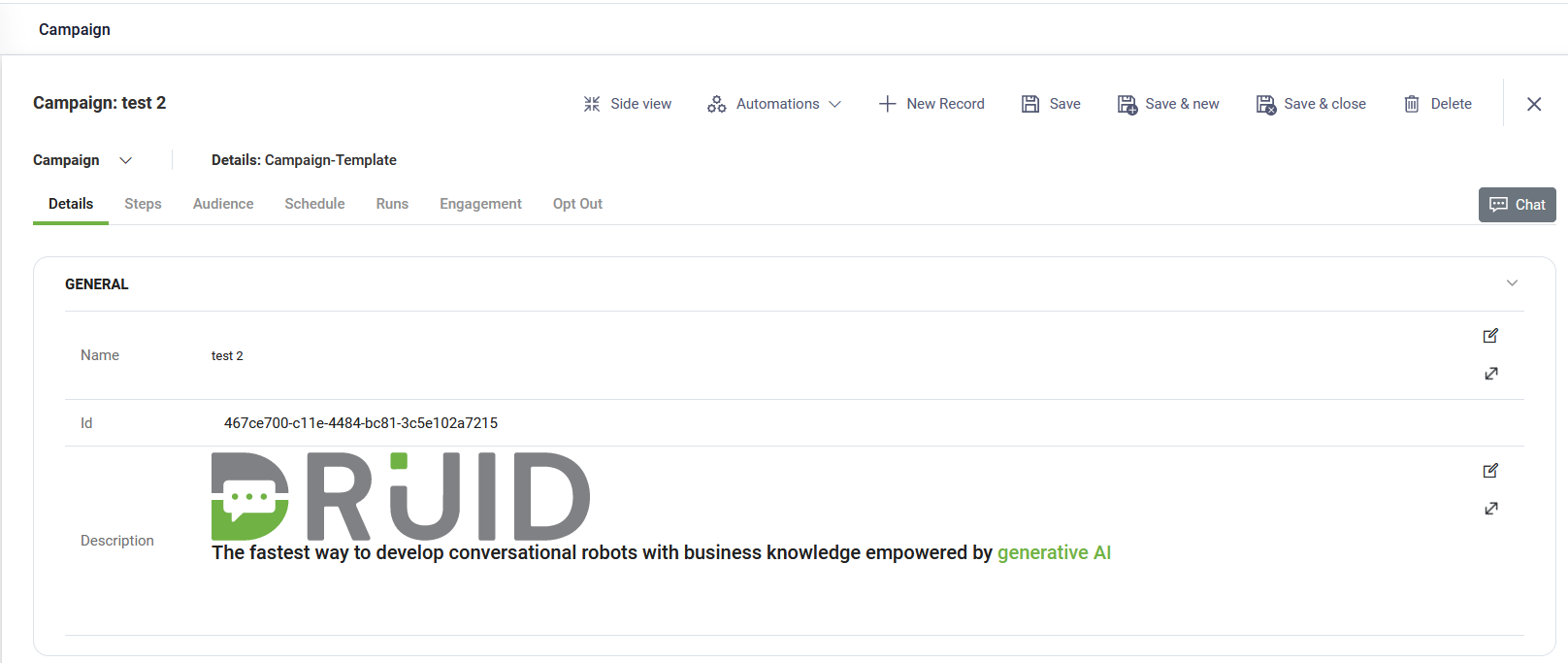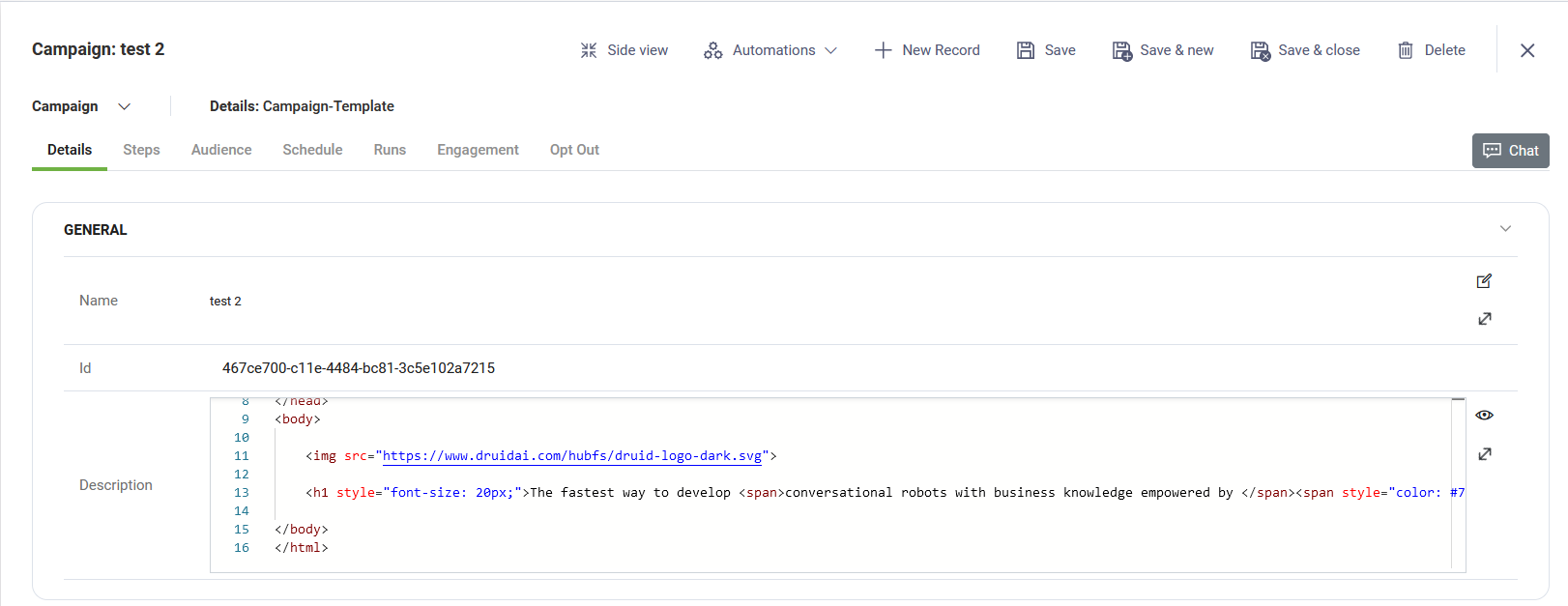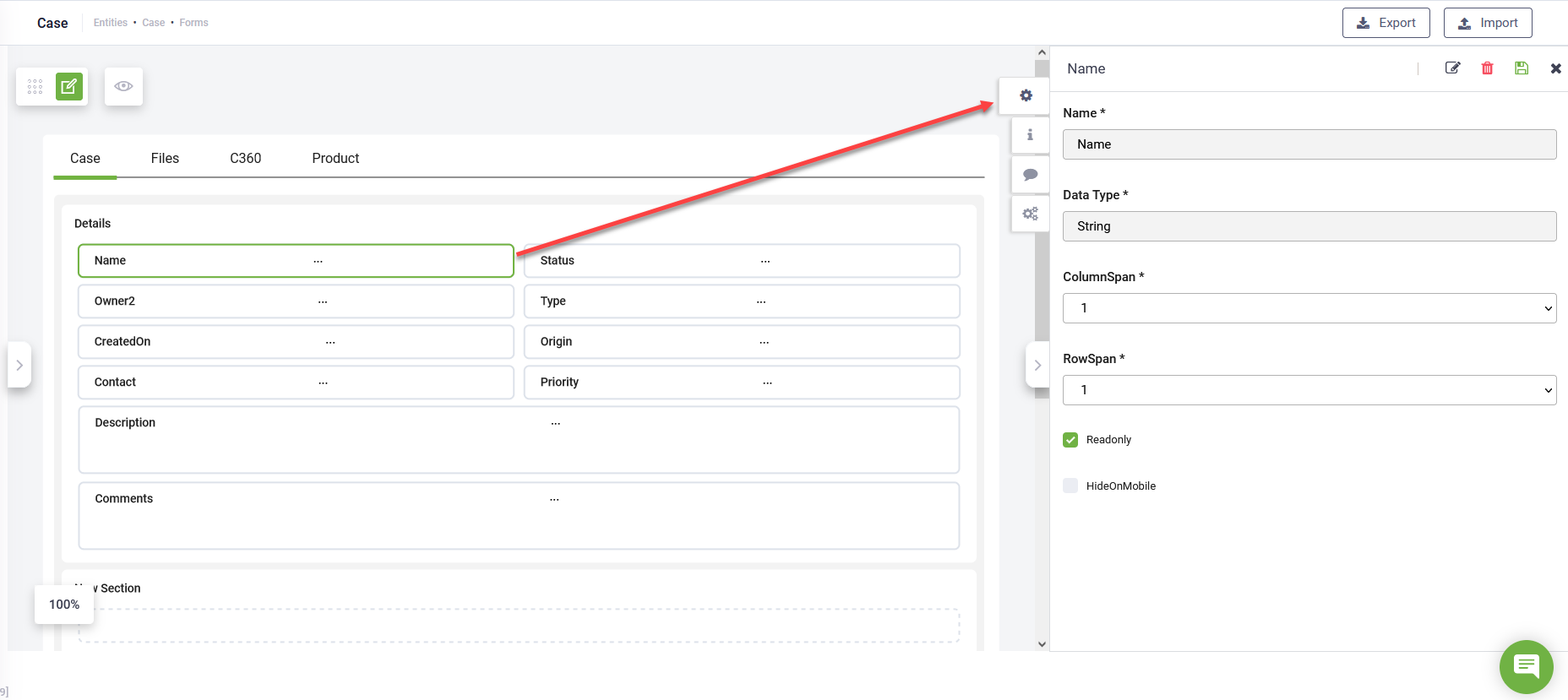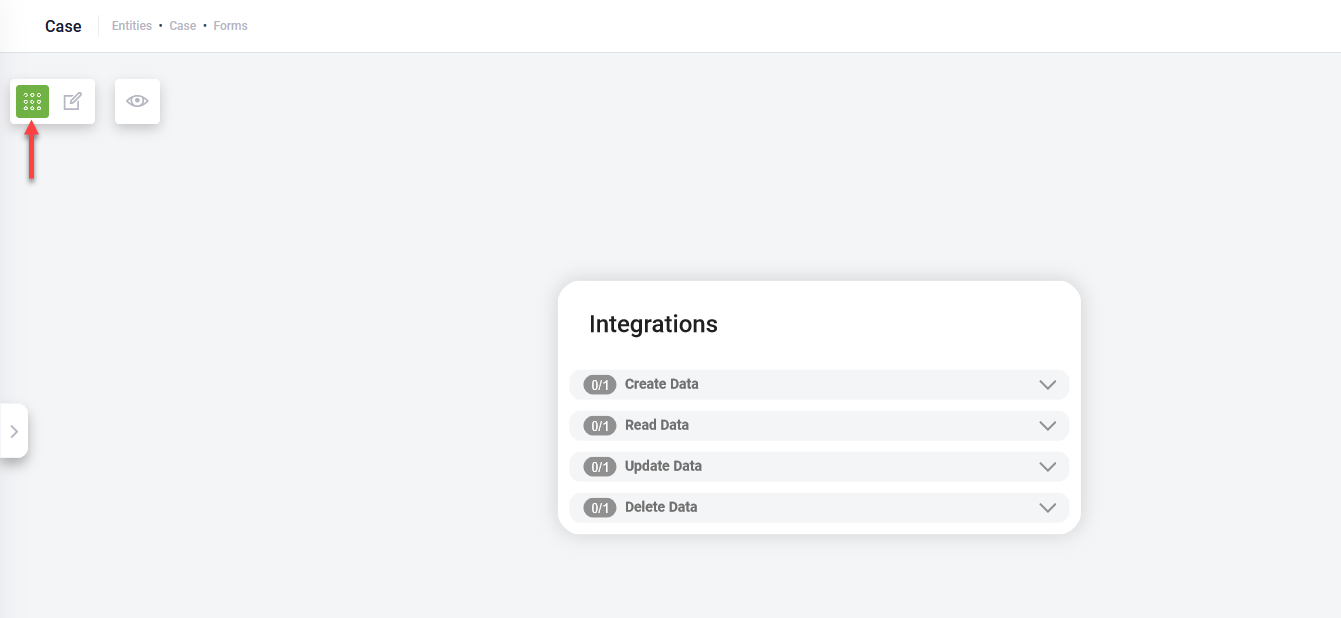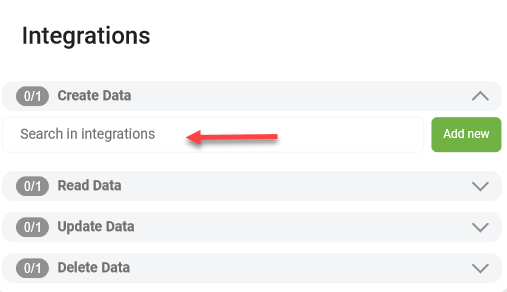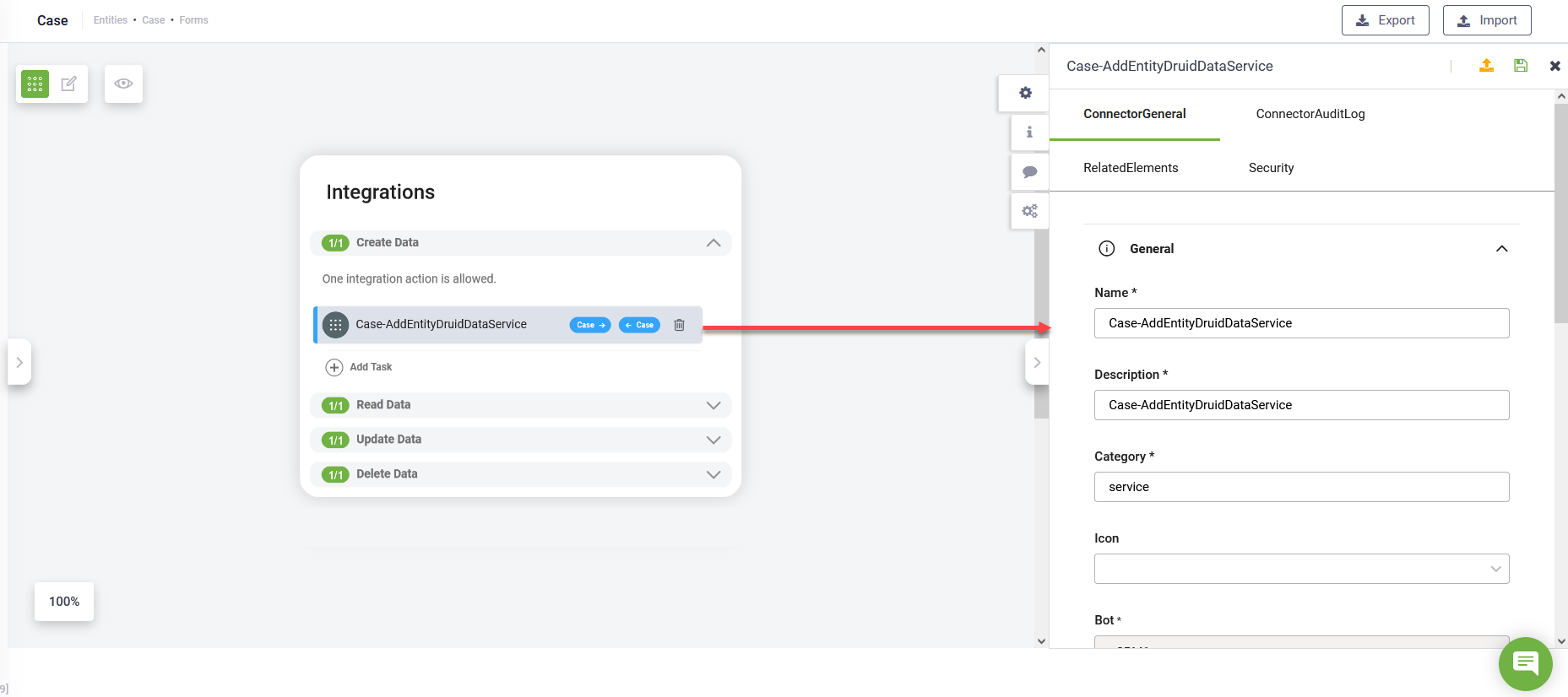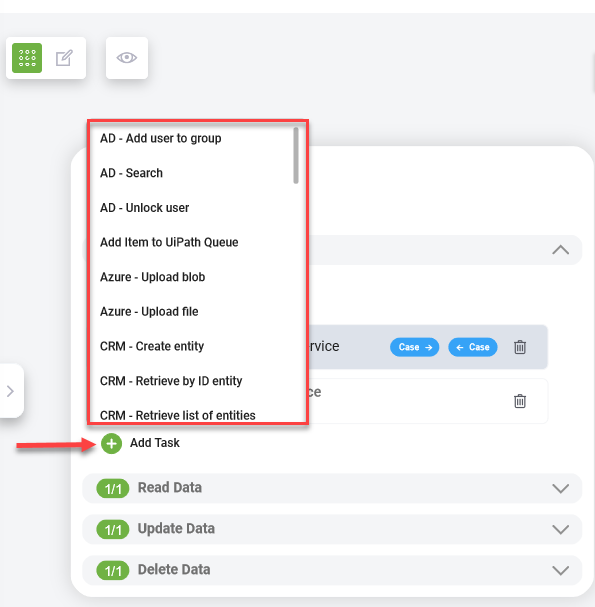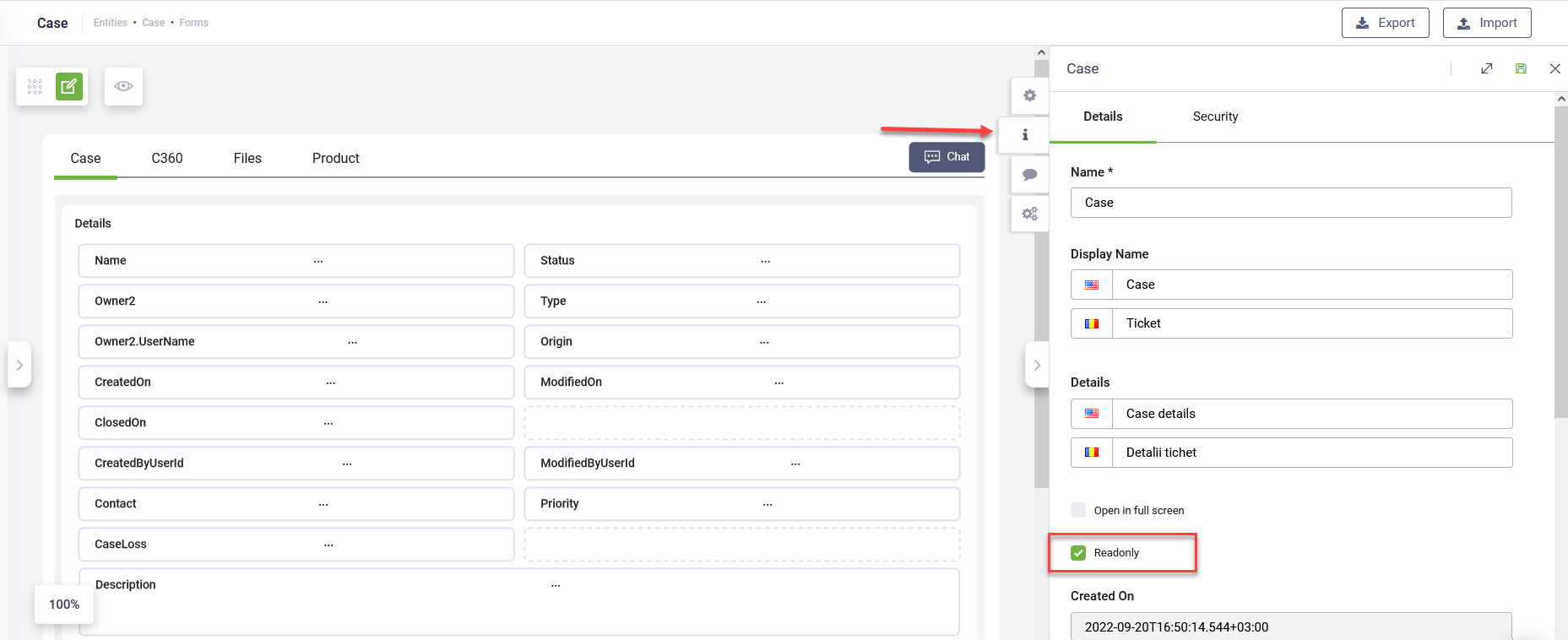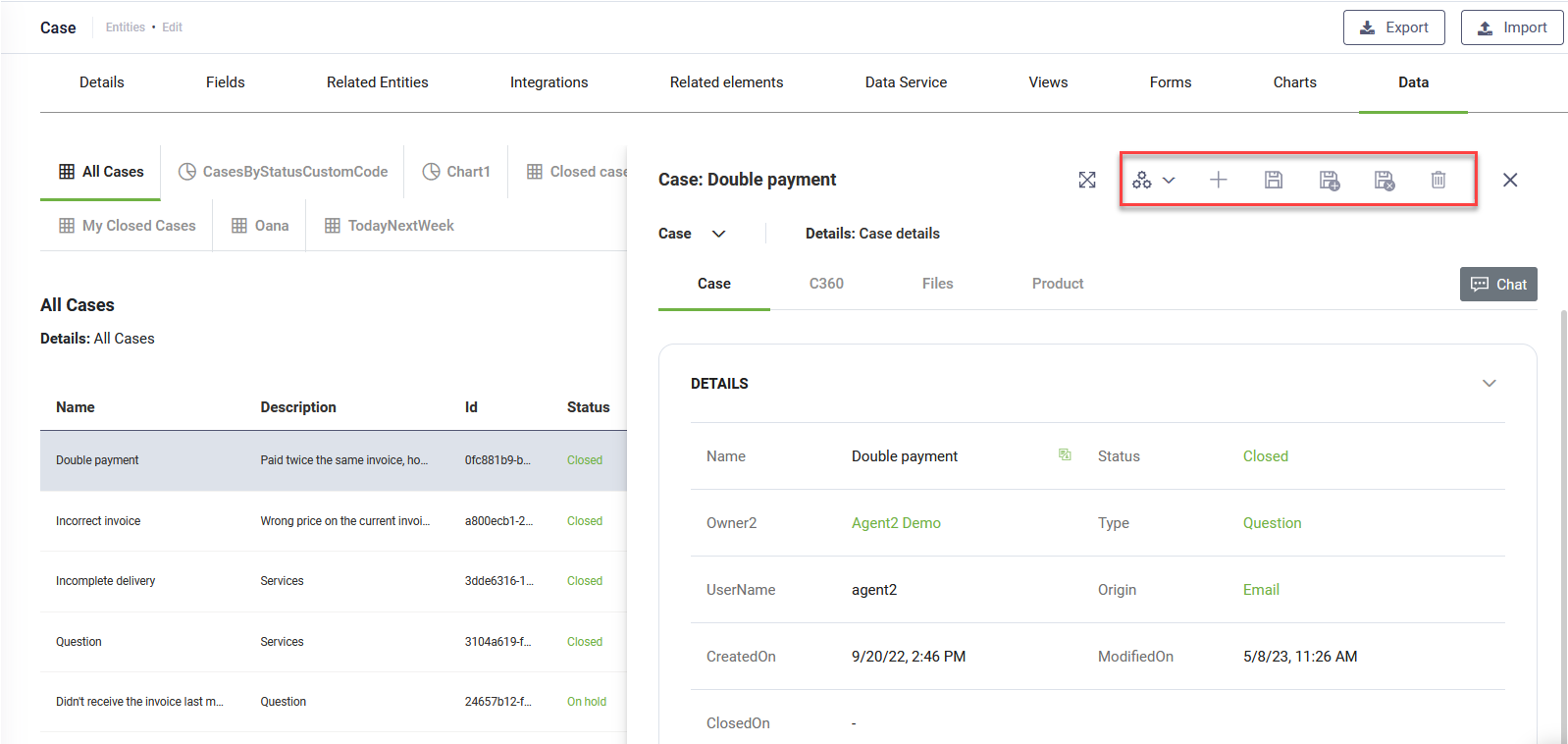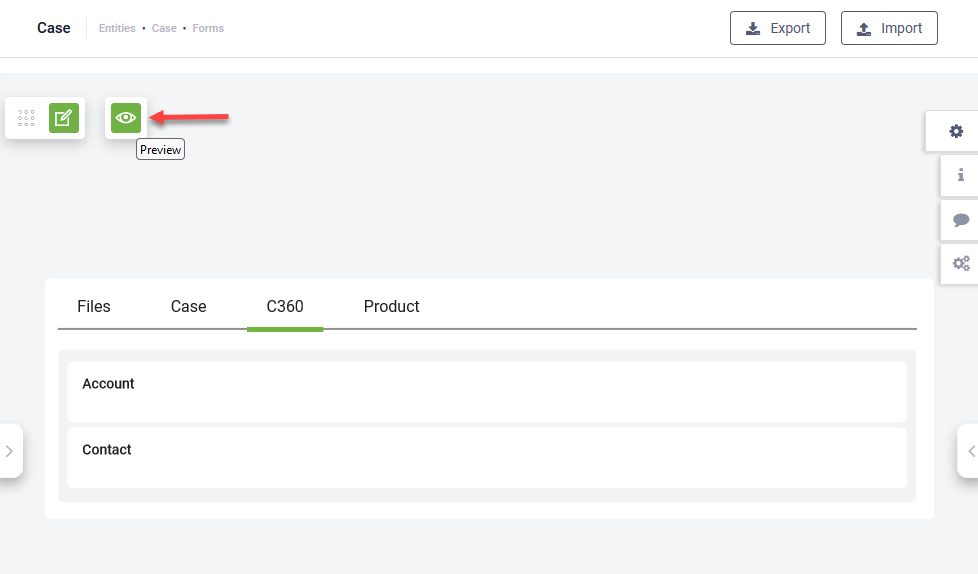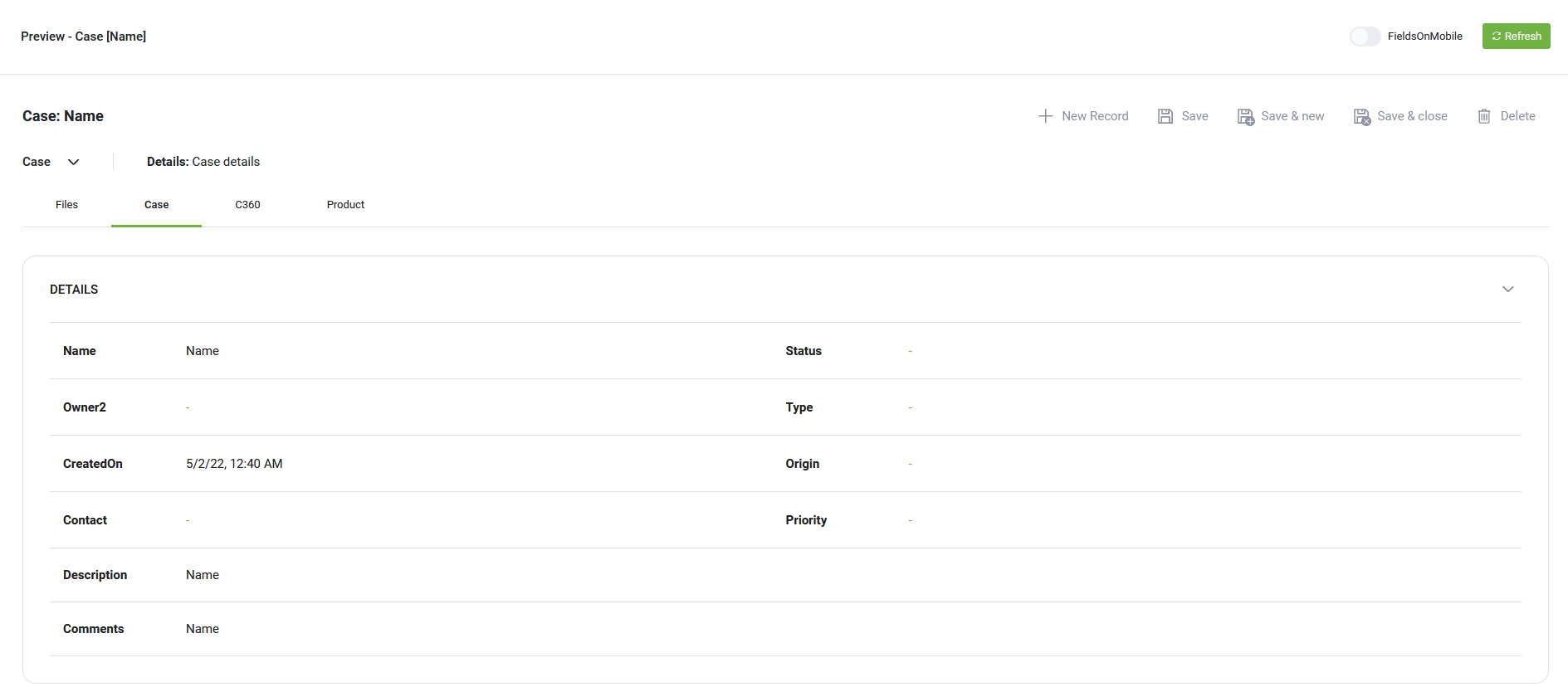Create and Design Forms
Authors can define simple forms that only show specific entity record data, and complex forms that enable business users to manipulate the data (add new record details, attach files, etc.).
The first form you create for an entity is set as default form for entity records. You can always set another form the default one for a specific entity. The default form will be used both on record entity creation and editing.
To create a form for an entity, follow these steps:
Step 1. Add form on entity
- From the Solution drop-down, select the desired solution and on the Solution Contents menu, click Entities. The page displays the list of entities linked to the current solution.
- Select the entity for which you added a link in the workspace. The entity configuration page appears on the Details tab.
- Click the Forms tab. The list of views created for the current entity appears. If there haven’t been defined any views, the page is empty.
- At the top-right corner of the page, click the CreateNewForm button (
 ). The CreateNewForm pop-up appears.
). The CreateNewForm pop-up appears. - Enter the form name and a brief description. The description will help you easily identify what data the form contains.
- Click Save.
Step 2. Define the form properties (optional)
On the entity’s forms page, click the Edit icon (![]() ) displayed in line with the form you want to define. The Form Designer appears. The right side editor displays by default on the Form properties (
) displayed in line with the form you want to define. The Form Designer appears. The right side editor displays by default on the Form properties (![]() ).
).
If you create forms which contain multi-lingual entity fields, you might want to provide the form Display name and Details in all languages set on the bot. This way, business users accessing the form in a specific language set on the bot will see the form information (both the form name and description) in that language.
You can also set the form to Open in full screen or make it Read-only (not editable).
After you set the view properties, click the Save icon (![]() ) at the top-right corner of the editor.
) at the top-right corner of the editor.
Step 3. Define the form
On the entity’s forms page, click the Edit icon (![]() ) displayed in line with the form you want to define. The Form Designer appears showing a form on the Form Diagram. The form contains a tab (formatted with one column) with an empty section (also formatted with one column).
) displayed in line with the form you want to define. The Form Designer appears showing a form on the Form Diagram. The form contains a tab (formatted with one column) with an empty section (also formatted with one column).
A form is comprised of tabs which contain sections. Both tabs and sections can have a column layout (one or multiple columns).
Defining a form means designing the form layout and defining the data that goes into each section (add fields to sections).
Design the form layout
Click the Palette icon (![]() ). The Palette contains two elements: Tab and Section.
). The Palette contains two elements: Tab and Section.
The tab element allows you to organize the form data in a way that enables the business users easily navigate through the data that is more relevant for them.
From the Palette, drag the Tab element and drop it on the Form Diagram. After adding a tab, design its layout. Click on the tab and in the settings editor, set the tab Name and Display Name.
If you want to format a tab in a newspaper-style column layout from the Layout field, select the desired number of columns.
After you finish adding the form tabs, in each tab, add sections to accommodate your form needs. From the Palette, drag the Section element and drop it within the tab(s).
For each section in the tabs design the section layout. In the Form Diagram, click the section and in the settings editor, set the section Name and Display Name.
If you want to format a section in a newspaper-style column layout from the Layout field, select the desired number of columns.
After you finish the sections, you need to define which data goes into each section.
You can reorder sections in a tab by using drag and drop.
Add fields to sections
To define which data goes into sections means adding fields and relations to sections. You can add multiple fields to a section.
You can add fields and relations to sections:
- Fields of the current entity. To see the current entity fields, on the left pane click the Fields icon (
 ).
).
- Fields of entities that are referenced by fields (of type Entity) of the current entity. To see the list of entities referenced by fields of type Entity defined on the current entity, click the Relations icon (
 ). The list of referenced entities appears. To see an entity’s fields, click the Plus icon (
). The list of referenced entities appears. To see an entity’s fields, click the Plus icon ( ) in front of it.
) in front of it.
To define which data goes into each of the form fields, navigate through the form tabs and follow the procedure described herein to define the sections data:
- Click on a section.
- From the left side, based on your needs, click either the Fields icon or the Relations icon.
- Drag the desired field from the fields /relations selector and drop it in the section. By default, the data that comes in the field on the form section will be displayed in one column and one row. Also by default, it is available on both desktop and mobile devices and business users can edit the data.
- In DRUID 8.18 and higher, you can add a small icon next to a field name or its value in web forms. Choose from a predefined set of icons and customize their color to enhance visual clarity and user experience.
- You can set the field layout, make it read-only and show on mobile devices or not. For that, in the Form Diagram click on the field and in the right editor set the desired properties.
- Save the field settings in the section by clicking the Save icon at the top-right corner of the right editor.
Field Property Description
| Field Property | Description |
|---|---|
| Preview file in form (image/video) |
NOTE: This parameter is available in DRUID 8.6 onwards only for fields of type File.
Select to enable a preview for image and video files directly within a form. Users can preview an image or play a video file without needing to download or open it in a separate application. This enhances usability and improves the user experience when working with file uploads in forms. |
| View |
Select the special view you created to provide your users with more information when clicking on the entity field. NOTE: The View field displays on the field layout editor only if the Data Type is 'Entity' or 'Entity list'. This field is available in DRUID 5.16 and higher. For backwards compatibility, if you leave this field empty, DRUID will use the default entity view.
|
| Column span | Select in how many columns you want to display the field data. The maximum is 3 columns and the default is 1. |
| Row span | Select on how many rows you want to display the field data. The maximum is 3 rows and the default is 1. |
| Control type |
The ControlType field property is visible in the field layout editor exclusively when the Data Type is 'String'. This property allows you to configure fields of type String to accommodate input in various languages including HTML, JavaScript, JSON, Markdown, XML, and SQL. HINT: If opting for a control type other than the default String, ensure to adjust the Row span accordingly for optimal form display.
NOTE: The ControlType is available in DRUID 7.3 and higher.
For fields with the Control Type HTML, users can preview the executed HTML code on the forms. |
| isEditModeDefault |
This option is accessible exclusively when the Control Type is set to a value other than 'String'. Selecting isEditModeDefault grants users default editing privileges for the field, eliminating the need for them to manually click the Edit icon to input data. |
| Readonly |
Prevent business users from editing the data in this field on the form. For example, the fields of type GUID should be read-only in forms. |
| Hide on mobile | Hide the field on the form when business users access the form on mobile devices. |
| Disable add new record |
This setting prevents users from adding new records when they navigate to views by clicking on entity fields of type Entity or Entity List. It’s useful for scenarios where you want users to select from a predefined list (e.g., a drop-down menu) without allowing them to create new records. NOTE: This field is available in DRUID 5.16 and higher.
|
| Disable navigation |
Prevent users from navigating to special views when clicking on entity fields of type Entity or Entity List. NOTE: This field is available in DRUID 5.16 and higher.
|
Step 4. Define the form data by adding integrations
Prerequisites
- In the solution for which you want to get an aggregated view on data coming from various data sources, make sure that you defined integrations with external data sources as best suits your needs.
- As the form provides the details of a record in a view and the view provides a list of records, make sure that on the integrations tasks you define, the entity for which you will define the views are set as response entity and it is a collection (in the integration task, Response tab, IsResponseCollection is checked).
Once you defined the form, you need to fetch entity data that will be displayed on the form, by adding integrations with external data sources. This way, your form is populated with the details of a specific entity record.
To define the form data follow these steps:
- At the top side of the Form Diagram, click the Add Integrations icon ( ). A pop-up appears. The pop-up contains four sections:
- Create Data – allows the creation of new entity records (to views).
- Read Data – enables data display for specific record ID.
- Update Data – allows updating the entity record data.
- Delete Data – allows you to define what happens when records are deleted from the form.
- For all four sections or for the section(s) specific to the action you want to allow on the form, add an integration, following the steps below:
- Add the integration action by using of the two options below:
- Search for an existing integration action defined in the current solution and press Enter on the keyboard.
- Add a new integration action. Click the Add new button (
 ) and define the connector action using the right editor. Make sure to select the current entity as Response entity and select Is Response Collection and Is Active.
) and define the connector action using the right editor. Make sure to select the current entity as Response entity and select Is Response Collection and Is Active.
- Add integration tasks. In the section, click on the Add task icon and select the desired integration task from the list where the current entity is Response entity and Is Response Collection is selected.
- Click the section and select the integration from where you want to data. This functionality is similar to defining integrations on flows.
Save the integration action by clicking the Save icon (![]() ) at the top-right corner of the editor.
) at the top-right corner of the editor.
You can select from the list of integrations where the current entity is set as response entity and it is a collection (Response tab, IsResponseCollection is checked).
3. Save the integration(s).
You can now preview the form and make further adjustments if needed.
Prevent users from editing records
To prevent users from editing records, make the form read-only. In the form configuration page, select Readonly.
When viewing a record, all buttons in the form are non-clickable.
Step 5. Optionally, preview and check the form
The authors can preview a form by clicking on the Preview icon displayed at the top side of the Form Diagram.
The form in preview mode opens in a new browser page.
Authors and business users can filter the form and see only the fields that are hidden on mobile devices by tapping on FieldsOnMobile the at the top-right corner of the page and then clicking Refresh.
